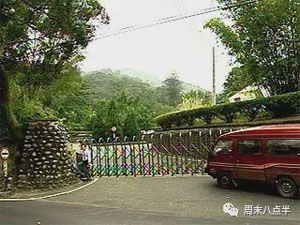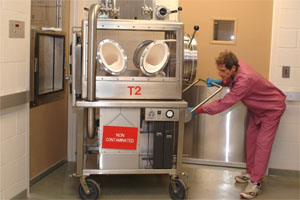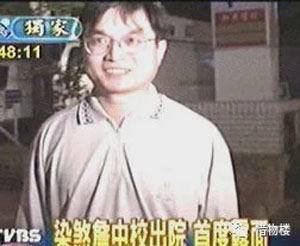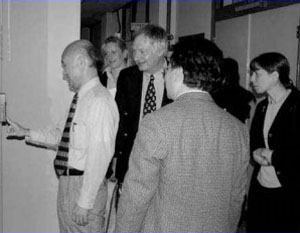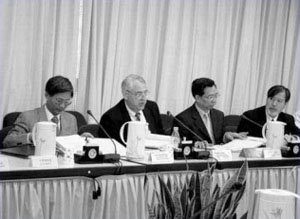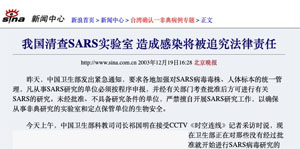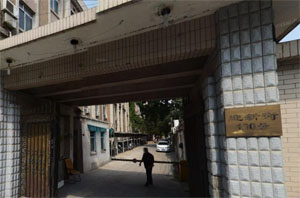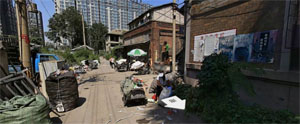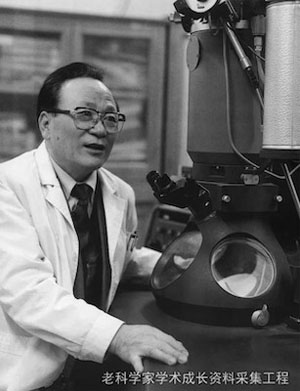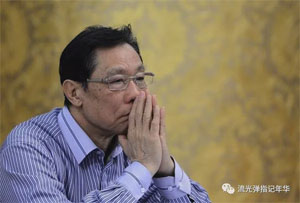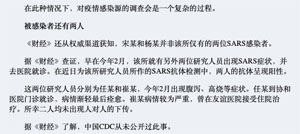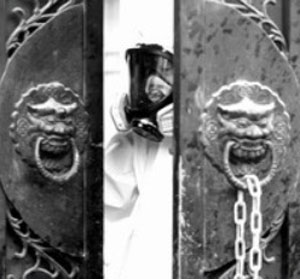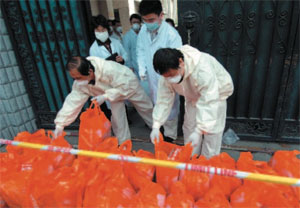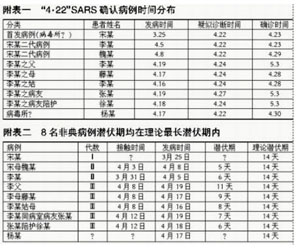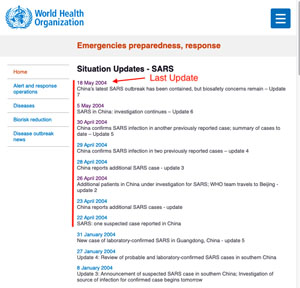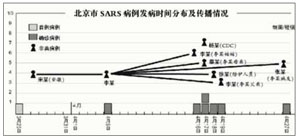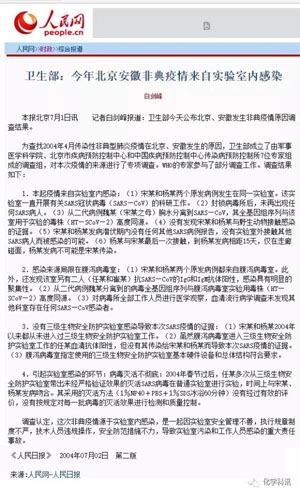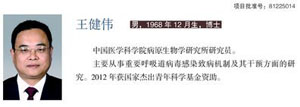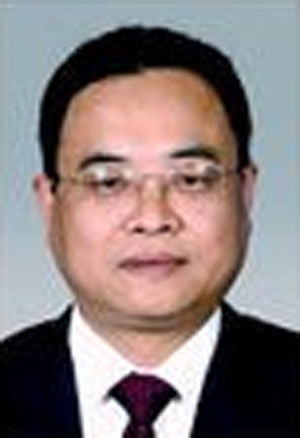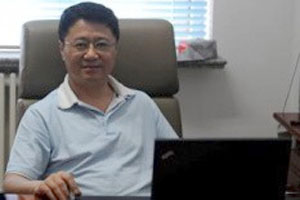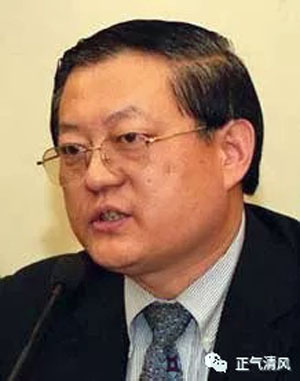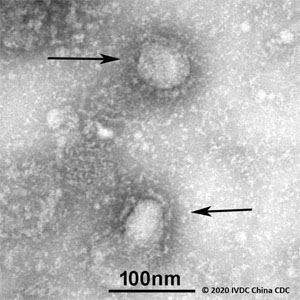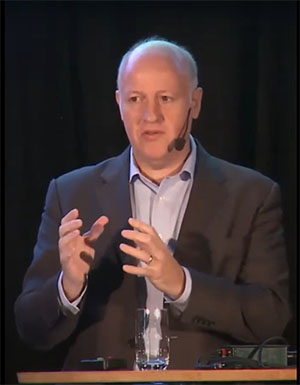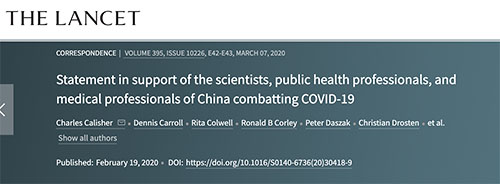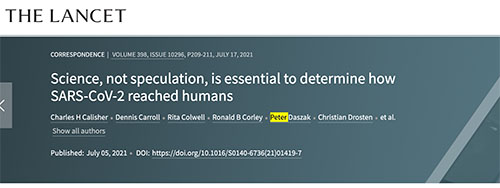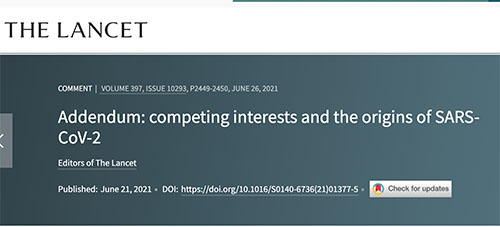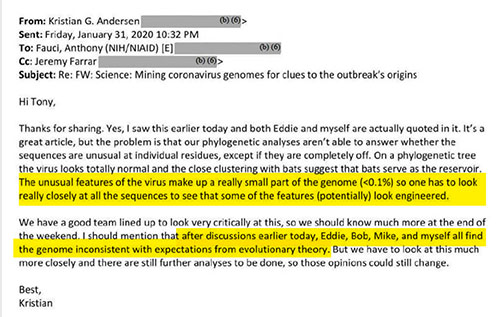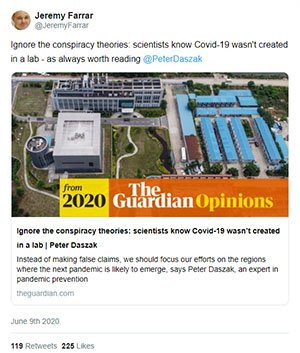The president touts the drug, but it hasn't proven effective against COVID-19.
by Libby Cathey
ABC News
August 8, 2020, 5:12 AM
African Americans account for 26% of confirmed COVID-19 cases but 43% of COVID-19 deaths....COVID-19 mortality rates in predominantly black counties are 6-fold higher than that in predominantly white counties....
Current evidence supports the notion that the common ion channel variants p.Asp85Asn-KCNE1 and p.Ser1103Tyr-SCN5A confer an increased risk of DI-LQTS and DI-SCD (Table 1 ).13 Importantly, p.Ser1103Tyr-SCN5A is seen almost exclusively in individuals of African descent and its frequency in that population (∼8%) is higher than that of p.Asp85Asn-KCNE1 (0.2%–2.5% depending on ancestry; 0.2% in individuals of African origin)...Heterozygous and homozygous carriers of SCN5A-p.Ser1103Tyr, a common genetic variant with functional effects among African-Americans, have an increased risk of sudden death.
-- SCN5Aallelic expression imbalance in African-Americans heterozygous for the common variant p.Ser1103Tyr, by Stacy AS Killen, Jennifer Kunic, Lily Wang, Adele Lewis, Bruce P Levy, Michael J Ackerman & Alfred L George Jr.
In individuals of African descent, the common SCN5A-encoded Nav1.5 sodium channel variant p.Ser1103Tyr-SCN5A has been associated with an increased risk of VA/SCD.14 , 15 , 17 Of note, this proarrhythmic potential has been reported to be enhanced by nongenetic risk factors known to reduce cardiac repolarization reserve (eg, hypokalemia and QTc-prolonging medication exposure....p.Ser1103Tyr-SCN5A is overrepresented in African American sudden infant death syndrome decedents...p.Ser1103Tyr-SCN5A confers an increased risk of sudden death in African Americans regardless of age....
Direct and/or indirect myocardial injury/stress, as assessed by cardiac biomarkers such as troponin I and brain-type natriuretic peptide, has emerged as both a prominent and a prognostic feature in COVID-19. Of note, in an adjusted Cox regression model, the mortality risk associated with elevated cardiac biomarkers/acute cardiac injury was more significant than age and high-risk comorbid conditions such as chronic obstructive/fibrotic pulmonary disease, diabetes, and a history of cardiovascular disease....
p.Ser1103Tyr-SCN5A could produce a similar African American–specific susceptibility to hypoxia-induced VA/SCD in the setting of SARS-CoV-2 infection/COVID-19....
Unfortunately, the increased risk of VA/SCD linked to the potentially proarrhythmic p.Ser1103Tyr-SCN5A common variant is likely not limited to the possibility of hypoxia-induced VA/SCD. As succinctly outlined in recent work by Lazzerini et al,27 the exaggerated immune response triggered by SARS-CoV-2 infection, specifically elevation of IL-6, likely increases arrhythmia risk via (1) modulation of cardiac ion channel expression/function leading to APD prolongation (eg, direct IL-6–mediated blockade of hERG/Kv11.1 potassium channels), (2) cardiac sympathetic nervous system hyperactivity, and (3) inhibition of cytochrome P450 enzymes involved in the metabolism of some QTc-prolonging drugs (eg, IL-6 and CYP3A4) (Figure 1). The latter effect of IL-6 is particularly important given that a number of COVID-19 pharmacotherapies (eg, hydroxychloroquine ± azithromycin and lopinavir/ritonavir) under investigation and/or in use clinically are known to prolong the QTc interval and predispose to DI-TdP/DI-SCD ...
these data suggest that 1 in 13 African Americans may be at a substantially increased risk of potentially lethal VAs, most notably DI-TdP, during the COVID-19 pandemic because of the perfect storm of (1) intrinsic genetic susceptibility (ie, p.Ser1103Tyr-SCN5A), (2) modifiable environmental risk factors (eg, electrolyte abnormalities and concurrent QTc-prolonging drug use), and (3) COVID-19–specific risk factors (eg, profound hypoxemia and cytokine storm) (Figure 1). Whether population-specific genetic risk factors such as p.Ser1103Tyr-SCN5A are contributing to the spike in sudden deaths and racial health disparities observed in COVID-19 epicenters remains to be proven, and given the lack of banked DNA in these epicenters, this speculation may not even be testable.
Nevertheless, given the potential for COVID-19 to exacerbate known gene-environment interactions pertaining to the potentially proarrhythmic p.Ser1103Tyr-SCN5A common variant, it seems reasonable (1) to avoid using COVID-19–directed QTc-prolonging drugs (eg, hydroxychloroquine ± azithromycin and lopinavir/ritonavir)...
A potentially pro-arrhythmic common variant, p.Ser1103Tyr-SCN5A, present in 1 out of 13 individuals of African descent has the potential to increase the risk of drug- and hypoxia-induced ventricular arrhythmias/sudden cardiac death and contribute to observed racial health disparities in the COVID-19 pandemic. As such, the use of unproven, QTc-prolonging COVID-19-directed therapies, most notably the combination of hydroxychloroquine and azithromycin, should be limited.
-- Genetic susceptibility for COVID-19–associated sudden cardiac death in African Americans
by John R. Giudicessi, MD, PhD, Dan M. Roden, MD, Arthur A.M. Wilde, MD, PhD, and Michael J. Ackerman, MD, PhD
President Donald Trump's continued embrace of hydroxychloroquine, an anti-malaria drug with unproven efficacy against the novel coronavirus, directly contradicts guidance from the nation's top public health agencies and officials.
Approved decades ago to prevent and treat malaria, the prescription medicine hydroxychloroquine and a similar drug chloroquine are used to treat autoimmune diseases like lupus and rheumatoid arthritis.
But the drugs have not shown to benefit coronavirus patients or proved effective as a prophylactic, according to the Food and Drug Administration, National Institutes of Health and scientific community at-large -- despite the president's persistent push.
Here's a timeline illustrating Trump's longstanding battle with health experts alongside scientific developments on hydroxychloroquine during the pandemic:
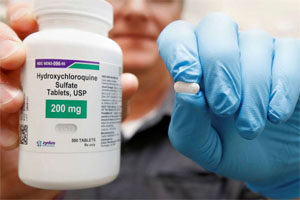
The drug hydroxychloroquine, pushed by President Donald Trump and others in recent months as a possible treatment for people infected with the coronavirus disease (COVID-19), is displayed by a pharmacist at the Rock Canyon Pharmacy in Provo, Utah, May 27, 2020.
March 19: Trump declares drug a 'game changer'
As parts of the country start shutting down in an effort to curb virus spread, Trump announces the FDA will fast-track approval of unproven coronavirus treatments, including chloroquine and hydroxychloroquine.
"The nice part is, it's been around for a long time, so we know that if it -- if things don't go as planned, it's not going to kill anybody," Trump says at a task force briefing.
The drugs are already in short supply in the U.S., as word spreads of their potential benefit to COVID-19 patients. Manufacturers say they are ramping up production.
March 20: Trump banks on 'a feeling' as Fauci calls evidence 'anecdotal'
Director of the National Institutes of Allergy and Infectious Diseases Dr. Anthony Fauci says, "the answer is no" when asked at a task force briefing if hydroxychloroquine is an effective coronavirus treatment, explaining signs of the drug's promise were purely "anecdotal evidence."
"But I'm a big fan, and we'll see what happens," Trump steps forward to add. "I feel good about it. That's all it is, just a feeling, you know."
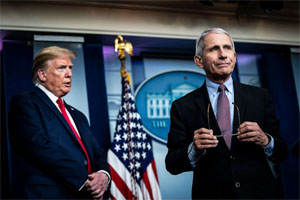
President Donald J. Trump listens as Dr. Anthony Fauci, director of the National Institute of Allergy and Infectious Diseases, speaks with members of the coronavirus task force, April 22, 2020 in Washington, DC.
March 21: Trump cites success of small French study, publisher later says data 'did not meet its standards'
Trump tweets to his roughly 84 million followers that hydroxychloroquine taken with the antibiotic azithromycin could be "one of the biggest game changers in the history of medicine" and should "be put in use immediately."
He cites a French study of three dozen patients published in the International Journal of Antimicrobial Agents on March 17. Twenty patients took hydroxychloroquine and just six received the combo.
The publisher issues a notice two weeks later saying the study "does not meet the Society's expected standard, especially relating to the lack of better explanations of the inclusion criteria and the triage of patients to ensure patient safety."
....be put in use IMMEDIATELY. PEOPLE ARE DYING, MOVE FAST, and GOD BLESS EVERYONE! @US_FDA @SteveFDA @CDCgov @DHSgov
— Donald J. Trump (@realDonaldTrump) March 21, 2020
March 24: Arizona man dies after ingesting non-medication chloroquine
A man in Arizona dies after ingesting a form of chloroquine used to clean fish tanks in an apparent attempt to self-medicate for the coronavirus, according to hospital system Banner Health.
"I had it in the house because I used to have koi fish," she says. "I saw it sitting on the back shelf and thought, 'Hey, isn't that the stuff they're talking about on TV?'"
March 28: FDA approves emergency use of hydroxychloroquine
The FDA issues an emergency use authorization to allow "hydroxychloroquine sulfate and chloroquine phosphate products" donated to the Strategic National Stockpile to be distributed to hospitalized patients with COVID-19.
The agency says the drugs will be distributed to certain patients when clinical trials are not feasible.
April 5: Trump on hydroxychloroquine: 'What really do we have to lose?'
The president doubles down on his defense of hydroxychloroquine, acknowledging he's "not a doctor" but has seen "good signs."
"We don't have time to go and say, 'Gee, let's take a couple of years and test it out. And let's go and test with the test tubes and the laboratories,'" Trump says at a task force briefing.
"If it works, that would be great," he adds. "But it doesn't kill people."
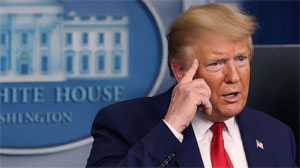
President Donald Trump speaks to reporters following a meeting of his coronavirus task force in the Brady Press Briefing Room at the White House on April 6, 2020 in Washington, DC.
April 8: Medical societies warn of COVID-19 combo
The American Heart Association, the American College of Cardiology and the Heart Rhythm Society warn in a joint guidance that the combination of hydroxychloroquine and azithromycin may not be appropriate for patients with existing heart problems.
"We are united in our mission to achieve optimal, quality care for our patients, and we must continue to be vigilant in assessing the potential complications of all medications during this crisis," says Dr. Athena Poppas, president of the American College of Cardiology.
April 9: NIH begins clinical trials of hydroxychloroquine
The National Institutes of Health begins a clinical trial to test the effectiveness of hydroxychloroquine in treating coronavirus with patients enrolled in Tennessee.
The study, later dismantled, was not estimated to be completed until July 2021.
April 13: Study in Brazil linking hydroxychloroquine to fatal heart problems makes headlines
A small research trial in Brazil abruptly ends after coronavirus patients taking a higher dose of chloroquine in combination with azithromycin developed irregular heart rates.
Within three days of beginning treatment, researchers started noticing heart arrhythmias in patients taking the higher dose of chloroquine. By the sixth day, 11 had died.
While meeting with recovered coronavirus patients at the White House, some of whom had taken hydroxychloroquine, Trump praises the drug as "an unbelievable malaria pill" and an "unbelievable lupus pill."
"We have tremendous endorsements, but if it was somebody else other than President Trump that put it forward, if some other person put it forward that said, 'Oh, let's go with it.' You know, what do you have to lose?" Trump says.
April 22: Vaccine chief ousted
The head of the federal agency charged with overseeing the rapid production of a coronavirus vaccine says he's removed from his post after trying to push back on problems he saw infecting the federal response, including being handed "misguided directives" to push the drugs chloroquine and hydroxychloroquine.
Dr. Rick Bright says in a statement his transfer was retaliation "in response to my insistence that the government invest the billions of dollars allocated by Congress to address the COVID-19 pandemic into safe and scientifically vetted solutions, and not in drugs, vaccines and other technologies that lack scientific merit."
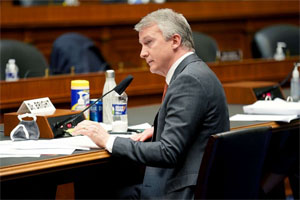
Dr. Richard Bright, former director of the Biomedical Advanced Research and Development Authority, testifies during a House Energy and Commerce Subcommittee on Health hearing to discuss protecting scientific integrity in response to the coronavirus outbreak, May 14, 2020. in Washington, D.C.
April 24: FDA warns against hydroxychloroquine use outside hospitals
The FDA issues a warning against using hydroxychloroquine outside of a hospital setting or clinical trial due to the risk of heart rhythm problems.
The agency says in a statement that the treatment has "not been shown to be safe and effective for treating or preventing COVID-19."
"Hydroxychloroquine and chloroquine can cause abnormal heart rhythms such as QT interval prolongation and ventricular tachycardia. These risks may increase when these medicines are combined with other medicines known to prolong the QT interval, including azithromycin," the FDA says.
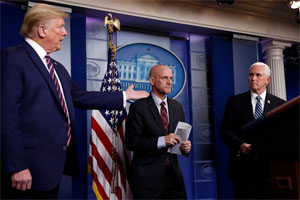
President Donald Trump gestures to Vice President Mike Pence as Stephen Hahn, commissioner of the U.S. Food and Drug Administration, steps back to the podium to answer a question during a briefing about the coronavirus in the James Brady Press Briefing Room of the White House, April 24, 2020.
April 26: Despite FDA warning, states stockpile hydroxychloroquine
As hospitalizations surge, state and local governments across the country obtain roughly 30 million doses of hydroxychloroquine, despite warnings more research is required.
At least 22 states and Washington, D.C., secure shipments of the drug, but health experts worry having it widely available could make it easier to misuse, The Associated Press reports.
May 11: Study shows hydroxychloroquine associated with cardiac arrest
The results of a retrospective study published in the Journal of the American Medical Association show that hydroxychloroquine is not effective against COVID-19 and is associated with cardiac arrest.
Researchers examined more than 1,400 patients with COVID-19 in New York City area hospitals found that patients treated with hydroxychloroquine had a similar death rate to those not treated with the drug.
When patients received a combination treatment of hydroxychloroquine and an antibiotic, the combo Trump promoted, they were more than twice as likely to experience cardiac arrest as those who took neither drug.
May 18: Trump says he's been taking hydroxychloroquine
The president says he's taking hydroxychloroquine in an effort to ward off the coronavirus, despite the FDA warning it should only be administered for COVID-19 in a hospital or research setting.
"At some point, I'll stop. What I'd like to do is, I'd like to have the cure and/or the vaccine, and that'll happen, I think, very soon," he says.
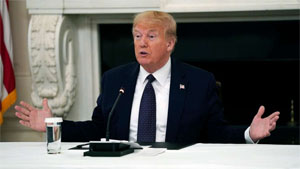
President Donald Trump speaks during a meeting with restaurant industry executives about the coronavirus response, in the State Dining Room of the White House, May 18, 2020.
May 24: Trump says he's finished taking hydroxychloroquine and is 'still here'
Trump tells "Full Measure with Sharyl Attkisson" that he "just finished" his two-week regimen of hydroxychloroquine and zinc and continues to claim "hydroxy" has had "tremendous, rave reviews."
"And by the way, I'm still here," he adds.
May 28: Prescriptions for hydroxychloroquine on rise
Research published in JAMA finds that during the 10-week period from Feb. 17 to April 27 doctors wrote approximately 483,000 more prescriptions for hydroxychloroquine than in the same time period in 2019.
Researchers says the surge is "likely due to off-label prescriptions for COVID-19."
June 15: FDA revokes its emergency use authorization
The FDA revokes emergency use authorization for chloroquine and hydroxychloroquine citing in a statement that the drugs are "unlikely to be effective in treating COVID-19 for the authorized uses."
"Additionally, in light of ongoing serious cardiac adverse events and other potential serious side effects, the known and potential benefits of chloroquine and hydroxychloroquine no longer outweigh the known and potential risks for the authorized use," it continues.
The federal government has now stockpiled millions of excess doses of the drug.
Peter Navarro, a trade adviser to Trump who helped distribute the drug tells The New York Times in response: "This is a Deep State blindside by bureaucrats who hate the administration they work for more than they're concerned about saving American lives."
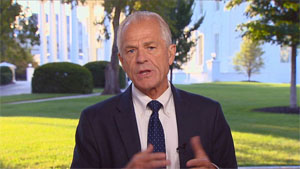
Peter Navarro appears on "Good Morning America," July 29, 2020.
June 20: NIH ends hydroxychloroquine trials
The NIH abandons clinical trials of the drug after finding that hydroxychloroquine "was very unlikely to be beneficial to hospitalized patients with COVID-19," the organization says in a statement.
"Study shows treatment does no harm, but provides no benefit," the NIH says.
July 1: FDA publishes findings of safety issues
Two weeks after revoking emergency use authorization of the drug, the FDA publishes a summary of safety issues tied to using hydroxychloroquine and chloroquine to treat patients hospitalized with COVID-19.
It includes "reports of serious heart rhythm problems and other safety issues, including blood and lymph system disorders, kidney injuries, and liver problems and failure."
July 28: Trump tweets video on hydroxychloroquine flagged by Twitter as misleading
Twitter flags and later takes down a video retweeted by Trump and directly shared by Donald Trump Jr. that featured a woman identifying as a doctor promoting hydroxychloroquine as a COVID-19 "cure," for violating the company's policies on misinformation related to the pandemic.
Donald Trump Jr.'s account is "temporarily limited" for the action, a Twitter spokesperson confirms.
That same morning, Fauci tells "Good Morning America" that clinical trials have shown hydroxychloroquine is "not effective."
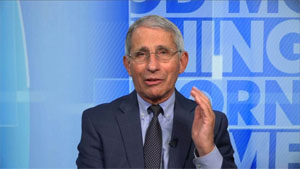
Dr. Anthony Fauci appears on "Good Morning America," on July 28, 2020.
"The overwhelming, prevailing clinical trials that have looked at the efficacy of hydroxychloroquine have indicated that it is not effective in coronavirus disease," Fauci says.
Aug. 2: Another task force doctor says he 'can't recommend' hydroxychloroquine
Assistant Secretary of Health Adm. Brett Giroir, who was tasked in March to lead the administration's testing efforts, tells NBC News he "can't recommend that as a treatment" when asked about the increasingly controversial drug.
"We need to move on from that and talk about what is effective," he says. "At this point in time, we don't recommend that as a treatment."
Aug. 3: Trump doubles down
The president continues to claim hydroxychloroquine has been criticized as a treatment "because I supported it."
"Hydroxy has tremendous support, but politically it is toxic, because I supported it. If I would have said, 'Do not use hydroxychloroquine under any circumstances,' they would have come out and they would have said it's a great thing," Trump tells White House reporters.
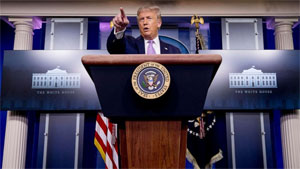
President Donald Trump calls on a reporter during a briefing in the James Brady Press Briefing Room of the White House, Aug. 5, 2020.
Aug. 4: FDA commissioner notes 'politicization' of hydroxychloroquine
FDA Commissioner Stephen Hahn tells ABC News' Chief Anchor George Stephanopoulos in an interview with "Good Morning America" that the decision to take hydroxychloroquine should "rest with physicians and patients" in privacy.
"There's been a lot of politicization, or political political back-and-forth about this, and George, this is about science and data. There are randomized trials that show that it doesn't work. There are observational trials that show that it might work," he says. "And we've put out information that we want doctors to have about both the safety and the risks, as well as the potential of benefits or not."
"I have had conversations with the president about this," Hahn adds, "and the president's been very clear: It might work, it might not."

